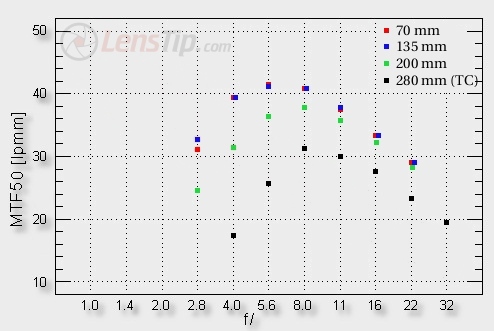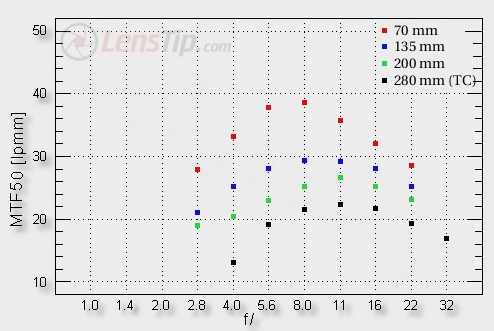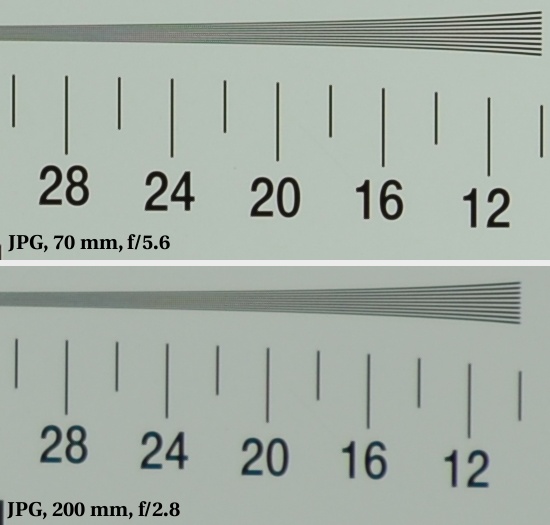Sigma 70-200 mm f/2.8 II EX APO DG Macro HSM
4. Image resolution

In principle the behavior of Sigma 70-200 mm f/2.8 II at the center of the frame is very similar to one we saw in Nikkor 80-200 f/2.8. In both cases we’re dealing with quite a soft maximum aperture, although at 200 mm Sigma comes out better. From f/4.0 both lenses, within the measuring errors, perform almost identically, presenting a very high level in the range 70-135 mm and slightly lower, but still decent at 200 mm.
Please Support UsIf you enjoy our reviews and articles, and you want us to continue our work please, support our website by donating through PayPal. The funds are going to be used for paying our editorial team, renting servers, and equipping our testing studio; only that way we will be able to continue providing you interesting content for free. |
- - - - - - - - - - - - - - - - - - - - - - - - - - - - - - - - - - - - - - - - - - - - - - - -
How does Sigma come out compared to the predecessor? It’s going to be more difficult to compare here, as the predecessor was tested on an 8-megapixel Canon 20D sensor. If you want to relate the lenses to each other, you need to multiply Canon’s results by an empirically established factor of 1.075. After applying this operation we’ll see that, within the measuring errors, the predecessor doesn’t differ from the successor. What’s more, its behavior at the maximum aperture appears to be marginally better than with the new lens. Where’s the improvement? We can’t see it yet…

Let’s check the edge of the frame, then. Again, at the beginning we remind you the results of the competitors. Nikon 70-200 VR again had no worthy competitors, coming out excellently at 70 mm focal length and very well in the remaining part of the range. Nikon 80-200 mm f/2.8 worked very well in the range 80-135 mm and left us unsatisfied at 200 mm, where especially at the maximum aperture didn’t even reach the level of 20 lpmm.
And again, Sigma 70-200 mm f/2.8 is close to Nikkor 80-200 mm f/2.8. The behavior at the shortest focal length is very good and noticeable better than Nikkor’s, especially at the maximum aperture. At 135 mm the situations turn. Nikon comes out much better than Sigma. At 200 mm, at the maximum aperture, both lenses come out similarly badly, but with stopping down the aperture Nikon reaches 30 lpmm, something Sigma doesn’t.
When we compare Sigma 70-200 mm f/2.8 II to the predecessor, we’ll see that at the edge of the frame the performance at the shortest focal length has improved significantly. The price for it is the slightly worse behavior at the remaining focal lengths. The benefit over the predecessor again almost absent.
What’s more, Sigma 70-200 f/2.8 II was additionally tested with a 1.4x Sigma converter. Looking at the MTFs both at the center and the edge of the frame we see that this combination won’t satisfy us much.
Traditionally, this chapter is ended with clippings of JPEG files saved simultaneously with RAW files during the test, on the basis of which MTFs were calculated.







